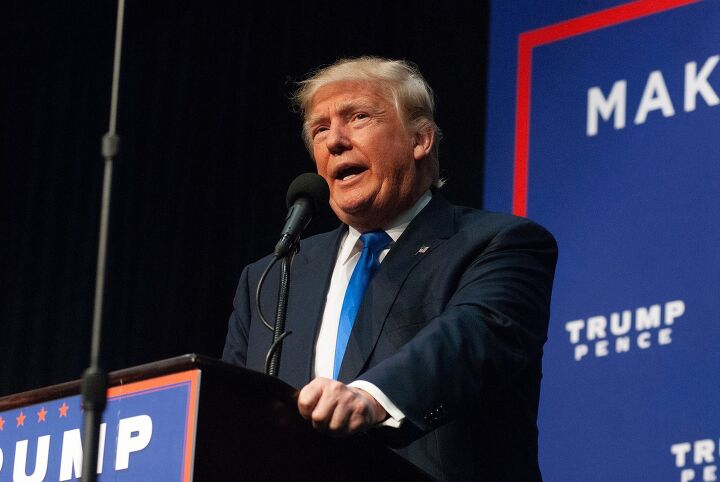
We touched upon this on Friday, but as expected, President Donald Trump signed orders expanding credits for U.S. automotive production.
From Reuters:
Trump’s order makes automakers eligible for a credit equal to 3.75% of the suggested retail price for U.S. assembled vehicles through 2030 to offset import tariffs on parts.
He is also extending the 3.75% credit for U.S. engine production and for U.S. medium- and heavy-duty truck production.
That’s at the same time that the administration is implementing 25 percent tariffs on imported medium- and heavy-duty trucks. The claimed reason is national security, despite pushback. Again, from Reuters:
The new tariffs cover all Class 3 through Class 8 trucks, including large pick-up trucks, moving trucks, cargo trucks, dump trucks, and tractors for 18-wheelers.
Trump last month said the tariffs were to protect manufacturers from “unfair outside competition” and the move would benefit companies such as Paccar-owned Peterbilt and Kenworth and Daimler Truck-owned Freightliner.
The U.S. Chamber of Commerce earlier urged Trump not to impose new truck tariffs, noting the top five import sources are Mexico, Canada, Japan, Germany, and Finland “all of which are allies or close partners of the United States posing no threat to U.S. national security.”
Mexico is the largest importer of medium- and heavy-duty trucks to the U.S., so it could be hit especially hard.
Trump is also levying a 10 percent tariff on imported buses.
Circling back to the credits that will give automakers who build cars in the States, the Commerce Department had initially planned to lower the percentage and keep it in place for two more years. But that’s changed, according to Reuters:
The Commerce Department said in June it planned an import adjustment offset equal to 3.75% of the suggested retail price for eligible U.S. assembled vehicles through April 2026 and then a second year at 2.5% to address tariffs from imported automobile parts.
The revised credit expands it to five years, keeps it at 3.75% throughout and extends it to more parts, which makes it more valuable for automakers and could give companies more incentive to shift production, Republican Senator Bernie Moreno said.
Ford CEO Jim Farley tells the wire service that these moves would lower the cost of auto parts for production, while in his view, the tariffs on large trucks will level the playing field.
When Trump initially proposed enacting tariffs on $460 billon of cars and auto parts in May, he suggested doing so at 25 percent. That provoked an understandable freakout among automakers and car buyers, especially since the automotive supply chain is so global that even cars built in the U.S. us parts sourced from overseas. Since then, Trump has reduced tariffs with certain countries by striking deals. Those countries include the U.K., Japan, and the members of the European Union.
Now, it appears that automaker lobbying will result in some more cut costs.
Still, the industry faces tariffs on steel and aluminum, which are key ingredients in automotive manufacturing. Exhaust systems, EV components, and more use these materials. General Motors says it will have to face $5 billion in gross tariff costs, and Ford is claiming $3 billion.
[Image: mark reinstein/Shutterstock.com]
Become a TTAC insider. Get the latest news, features, TTAC takes, and everything else that gets to the truth about cars first by subscribing to our newsletter.


